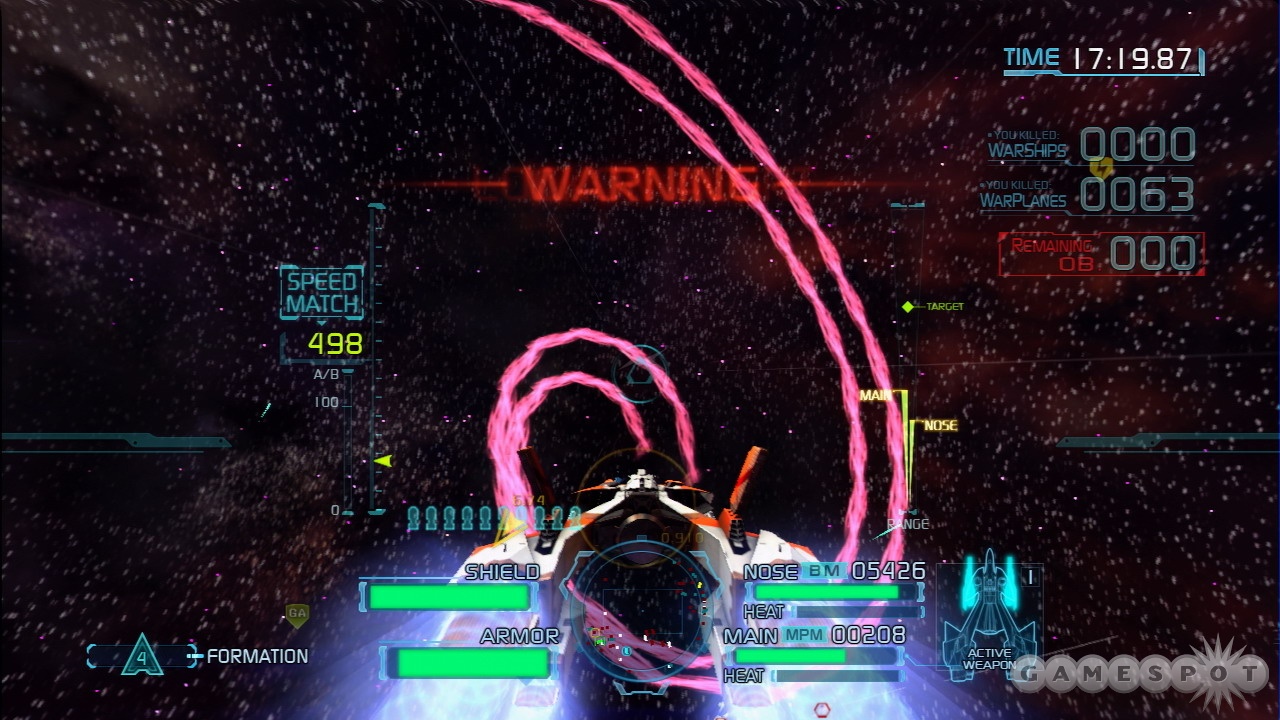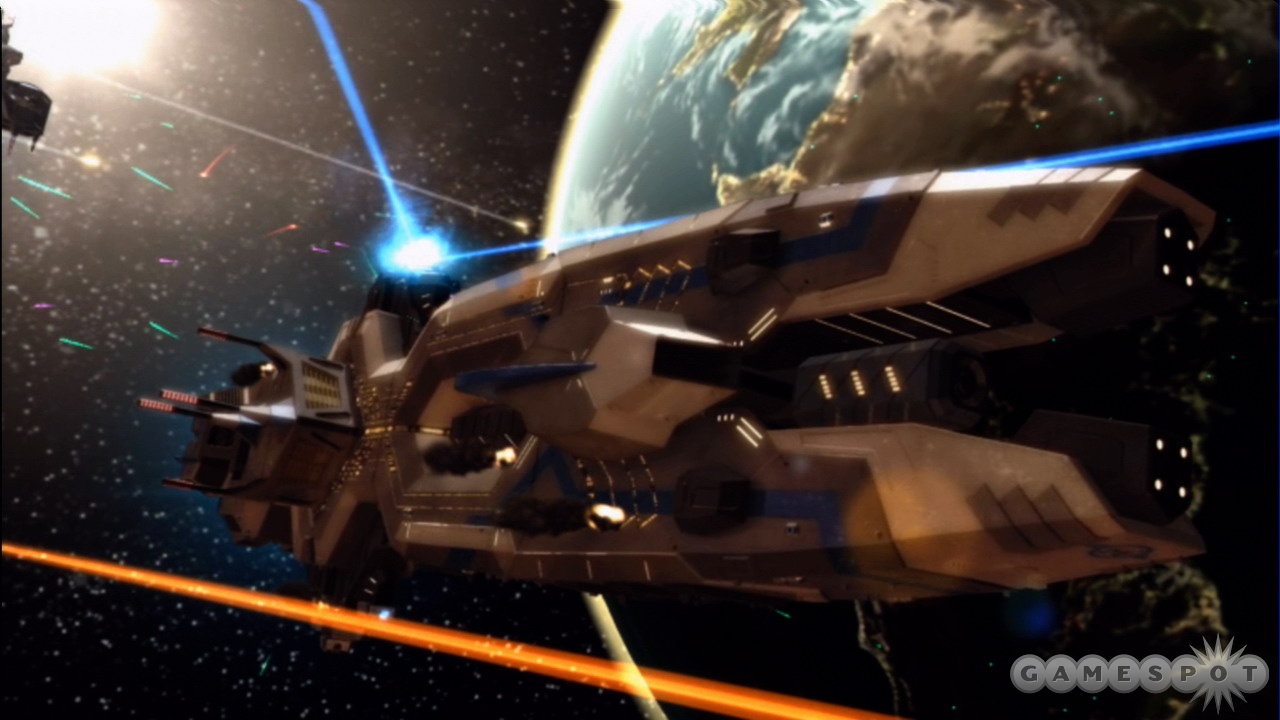Project Sylpheed Hands-On
We get our hands on Microsoft's upcoming space shooter follow-up to the old Game Arts classic.
You may remember Silpheed as the 1988 PC side-scrolling shooter that looked intriguingly 3D for a game of its time. Or perhaps you remember it as the 1993 Sega CD shooter, which promised ground-breaking real 3D only to be overshadowed by a certain fox, now a star. The series returned with Silpheed: The Lost Planet, but it was met with as many jeers as cheers. So now that the aging shooter series is readying for a launch on the Xbox 360, what new course have Square Enix and Microsoft plotted?
Their first act was to change the name from Silpheed to Project Sylpheed. Why, indeed? Perhaps to bring the title closer to its roots, the 19th-century ballet La Sylphide about love, spite, and wood nymphs. Although we didn't see any nymphs or bewitched scarves (the heroes' undoing in the ballet), Project Sylpheed looks to be a space opera in its own right, complete with unrequited love, betrayal, and laser beams--Daft Punk meets Flight of the Valkyries.

The story follows the interstellar drama of young space cadets enmeshed in a war between an overbearing empire and an upstart rebellion. All the pieces of an anime saga are intact, complete with androgynous male hero, Katana (at least it's not Stiletto); innocent, chaste, and helpless female lead, Ellen; woman with huge breasts, Sandra; and white-haired villain, Night Raven. As Katana, you'll slice through exotic space-scapes in your slick-looking fighter jet, while war, drama, and the universe itself unfold all around you.
The perspective is a behind-the-ship view, with the vessel perpetually at the bottom-middle of the screen. Unlike other entries in the series, this is no rail shooter, you have full range of motion within large, stellar battle quadrants. How you maneuver in those 360 degrees is unusual in that you don't strictly turn, you rotate, like a real fighter jet. So if you want to turn right, you rotate until what was on your right is above you and pull up.
It can be a little discombobulating at first, but the game has several measures in place to make sure you can always get your bearings. The most helpful of these is the ability to automatically face your nearest enemy by simply holding the A and B buttons. From there, you can pull the L and R triggers to match your mark's speed, making it easy to stay on your enemy's tail, as long as you maneuver with your enemy.

When you come within striking distance, your ship's computer will draw a targeting reticle to illustrate where you'd need to fire to hit your target. Slowly and steadily, you'll move your crosshairs into that window then fire. What happens next depends on which weapons are equipped.
For starters, you always have a nose weapon (usually a machine gun) and two main weapons (beams, lasers, missiles or bombs). You begin the game with an arsenal that would make Darth Vader jealous and can buy dozens more with credits you earn for your performances in each mission. At first, you'll be in love with the multiple-heat-seeking missile launcher for the way it can target and eliminate multiple weak foes. But as your piloting touch becomes finer and you learn to patiently follow enemies, you'll begin to appreciate the scalpel-like laser weapons, as well as the rapid-firing-but-unguided rockets.
Whatever your preference, you will never lack for things to shoot at because the spaces in Project Sylpheed are always humming with swarms of enemies, from tiny fighter jets to giant space frigates. While smaller foes can be dispatched any number of ways, large ships have hard points that must be disabled before they can be destroyed; not to mention heavy weaponry that can reduce your high-tech flying machine to a low-tech tangle of metal faster than you can say "Space Balls!"

In other space shooters, it's easy to get dozens of kills without actually seeing your targets through the lock-on reticle because their ships are small and space is black. In Project Sylpheed, you're also up against small, would-be invisible ships except for the psychedelic pink wakes they leave everywhere they go. Not only do these help you spot enemies you haven't targeted yet, they also make the game look more interesting than your typical jumble of targeting diamonds and weapons fire. Then again, some areas don't require any extra beautification, taking place around gorgeously detailed orbital space stations or near neon nebulas--few space operas have had better backdrops.
These would also seem to be the perfect settings for massive online battles, although the build we played had no multiplayer features. Whether Game Arts and Square Enix plan to boldly go into the online frontier or remain in orbit around their rich, anime space-saga, Project Sylpheed could be a ship to jump on when it blasts off this summer.
Got a news tip or want to contact us directly? Email news@gamespot.com
Join the conversation